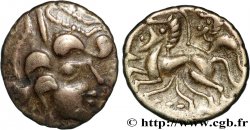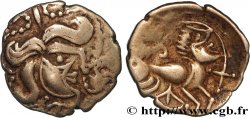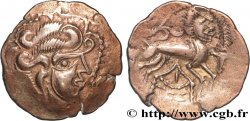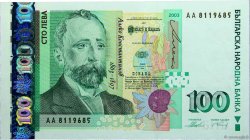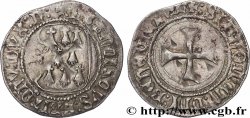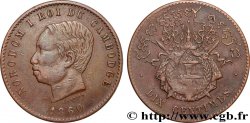bga_285862 - GALLIA - ARMORICA - OSISMII (Area of Carhaix - Finistère) Statère d'électrum à la tente - à la tête coupée
Not available.
Item sold on our e-shop (2012)
Price : 1 700.00 €
Item sold on our e-shop (2012)
Price : 1 700.00 €
Type : Statère d'électrum à la tente - à la tête coupée
Date: c. 80-50 AC.
Mint name / Town : Brest (29)
Metal : electrum
Diameter : 21,5 mm
Orientation dies : 12 h.
Weight : 6,49 g.
Rarity : R3
Coments on the condition:
Statère sur un flan relativement large avec les types complets, mais une zone lisse devant le visage. Patine très claire, probablement nettoyée anciennement
Catalogue references :
Predigree :
Cet exemplaire est le n°20 du trésor d'Hennebont ; il est issu des coins D14 - R19.
Obverse
Obverse legend : ANÉPIGRAPHE.
Obverse description : Tête stylisée à droite, la chevelure principalement composée de deux gros rouleaux parallèles à l'arcade sourcilière et un troisième derrière la nuque ; le menton terminé pas une sorte d'esse ; une croix dans la chevelure ; cordons perlés autour de la tête avec une petite tête coupée devant le visage
.
Reverse
Reverse legend : ANÉPIGRAPHE.
Reverse description : Cheval androcéphale à gauche ; une sorte de tente stylisée entre les jambes ; au-dessus de la croupe, une tête coupée terminée par une croix en guise de stimulus devant le poitrail du cheval
.
Commentary
Avec le revers à gauche, ces statères n° 16 à 21 sont de styles différents. Aucun ne correspond exactement aux variantes 1 et 2 du type à la tente. La var. 1 (= BN 6516 et DT. 2212 ne semble pas avoir une petite tête devant le visage, mais plutôt une croix terminant le cordon perlé). La var. 2 (DT. 2211) est caractéristique avec son cou de forme triangulaire. Les n° 16 et 17 sont issus du même coin de droit avec un cou rectangulaire et orné de quatre segments ; leurs revers présentent un même type de tente inachevée. Le n° 18 a bien un cou triangulaire, comme pour la var. 2, avec une belle tente complète au revers. Le n° 19 est stylistiquement assez proche du n° 18, mais avec un cou différent, non triangulaire ; la tente du revers est inachevée, sans le toit. Le n° 20 semble plus stylisé, avec une zone vide devant le visage (sans tête coupée ou plat de frappe ?) ; son revers a une tente très schématique, comparable à celle du LT. 6516. Le n° 21 est d'un style assez fin, avec un droit très proche des statères au personnage recroquevillé.
With the reverse on the left, these staters nos. 16 to 21 are of different styles. None correspond exactly to variants 1 and 2 of the tent type. Variant 1 (= BN 6516 and DT. 2212 does not seem to have a small head in front of the face, but rather a cross ending the beaded cord). Variant 2 (DT. 2211) is characteristic with its triangular neck. Nos. 16 and 17 are from the same obverse die with a rectangular neck decorated with four segments; their reverses show the same type of unfinished tent. No. 18 does have a triangular neck, as in var. 2, with a beautiful, complete tent on the reverse. No. 19 is stylistically quite close to No. 18, but with a different, non-triangular neck; the tent on the reverse is unfinished, without the roof. No. 20 appears more stylized, with an empty area in front of the face (without a severed head or striking plate?); its reverse has a very schematic tent, comparable to that of LT. 6516. No. 21 is of a fairly fine style, with a right very close to the staters with the curled-up figure
With the reverse on the left, these staters nos. 16 to 21 are of different styles. None correspond exactly to variants 1 and 2 of the tent type. Variant 1 (= BN 6516 and DT. 2212 does not seem to have a small head in front of the face, but rather a cross ending the beaded cord). Variant 2 (DT. 2211) is characteristic with its triangular neck. Nos. 16 and 17 are from the same obverse die with a rectangular neck decorated with four segments; their reverses show the same type of unfinished tent. No. 18 does have a triangular neck, as in var. 2, with a beautiful, complete tent on the reverse. No. 19 is stylistically quite close to No. 18, but with a different, non-triangular neck; the tent on the reverse is unfinished, without the roof. No. 20 appears more stylized, with an empty area in front of the face (without a severed head or striking plate?); its reverse has a very schematic tent, comparable to that of LT. 6516. No. 21 is of a fairly fine style, with a right very close to the staters with the curled-up figure







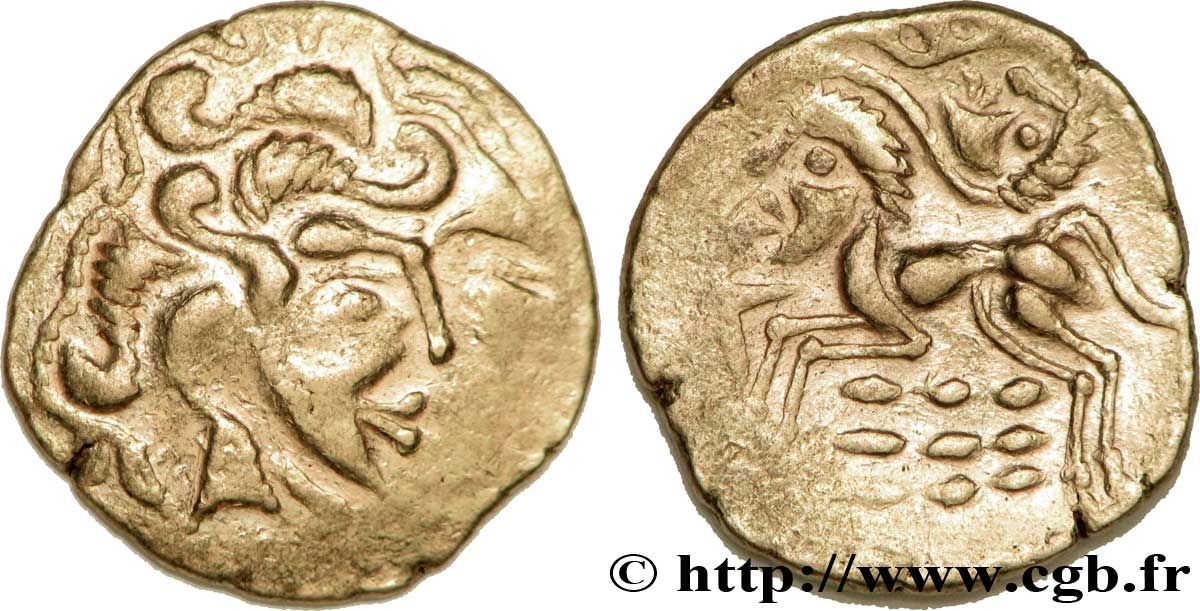
 Report a mistake
Report a mistake Print the page
Print the page Share my selection
Share my selection Ask a question
Ask a question Consign / sell
Consign / sell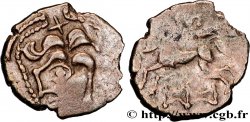
 Full data
Full data